Microbial Genetics By Konrad T. Juszkiewicz MD, MPH





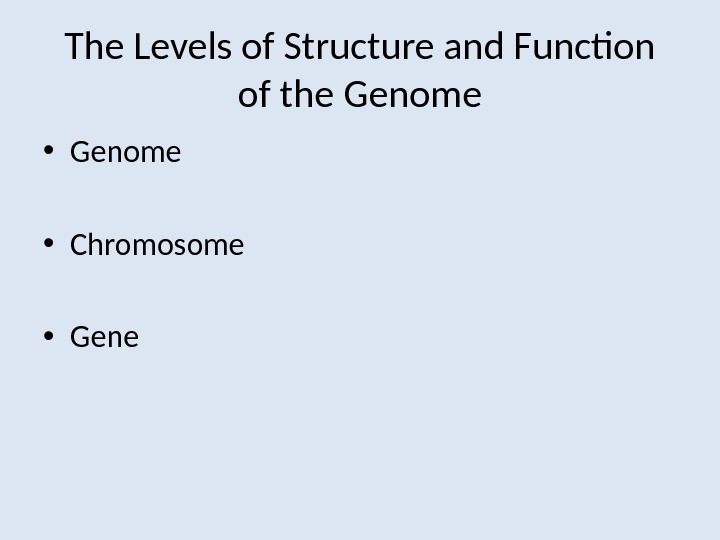












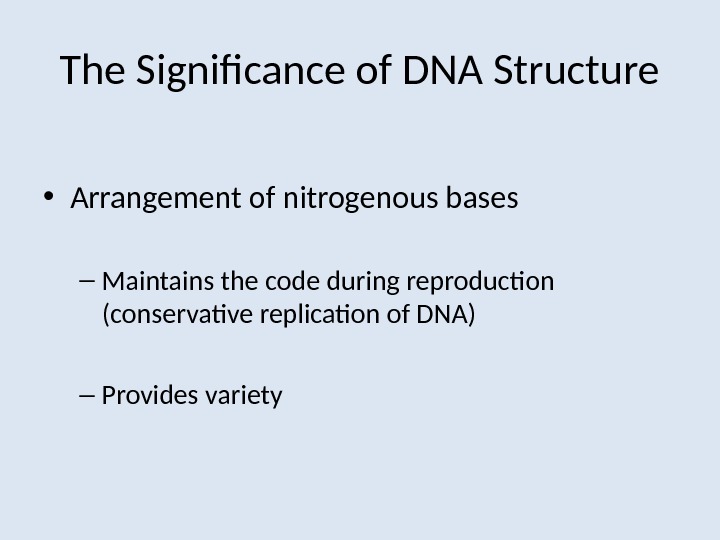


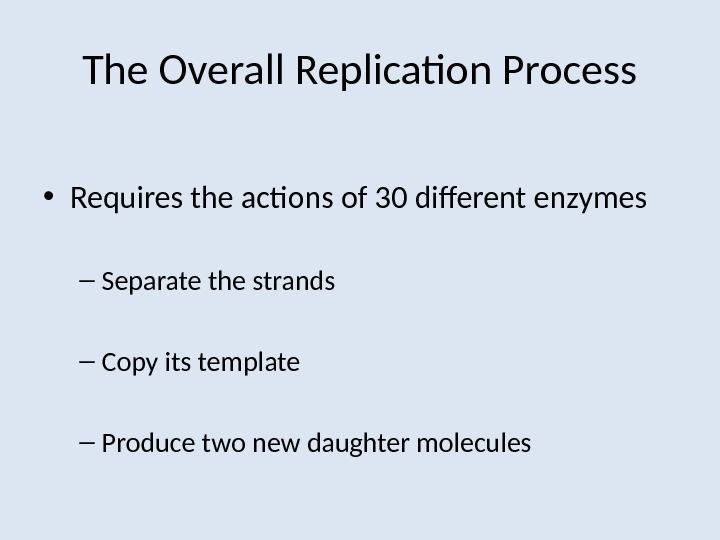


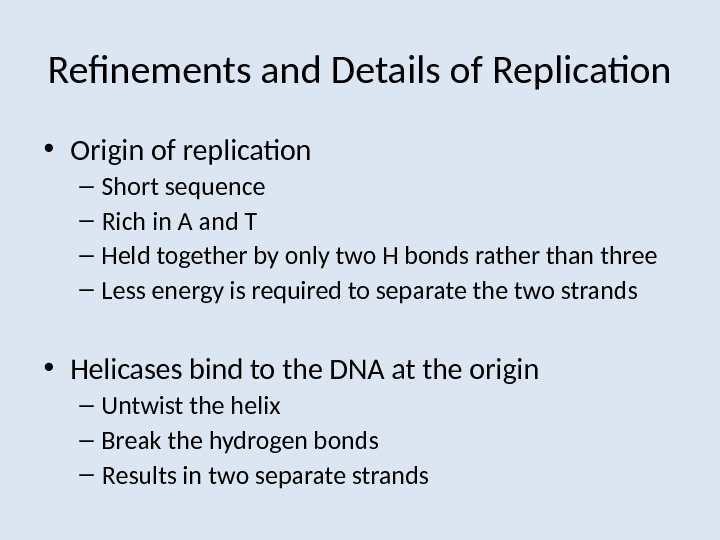











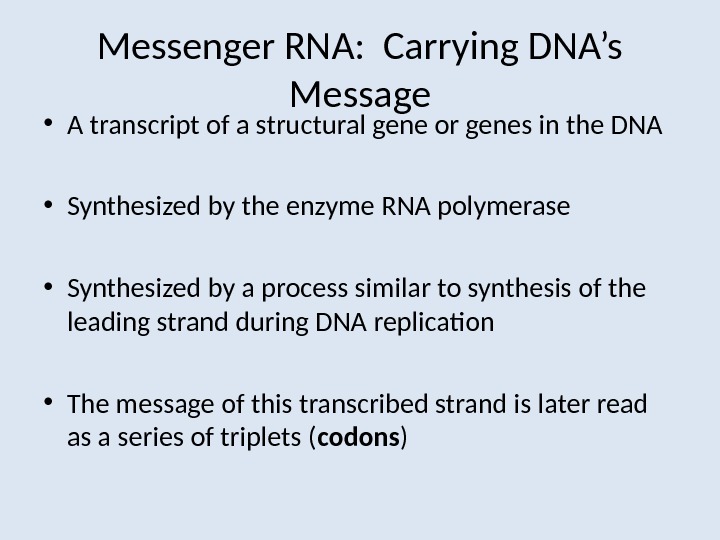

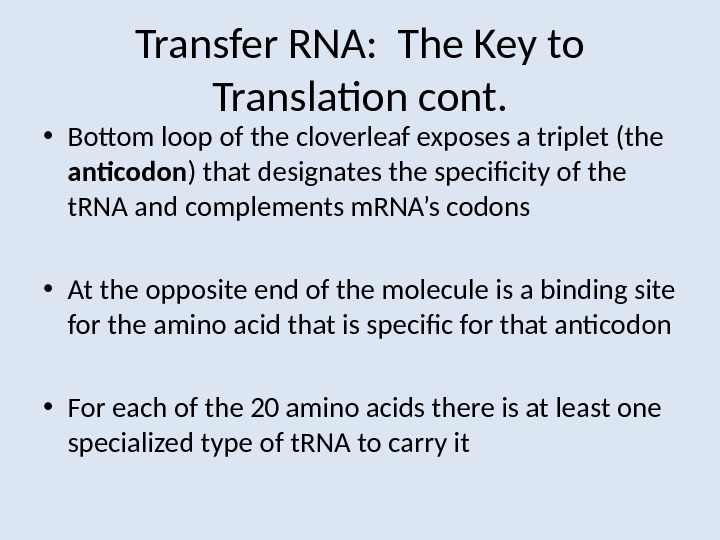

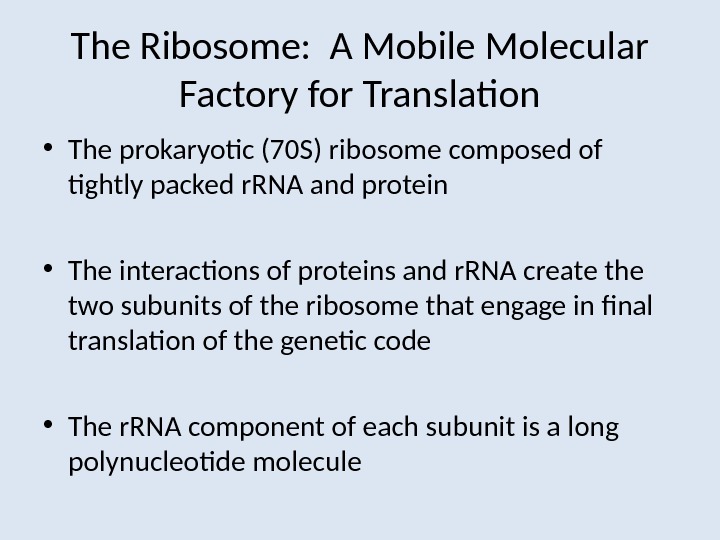









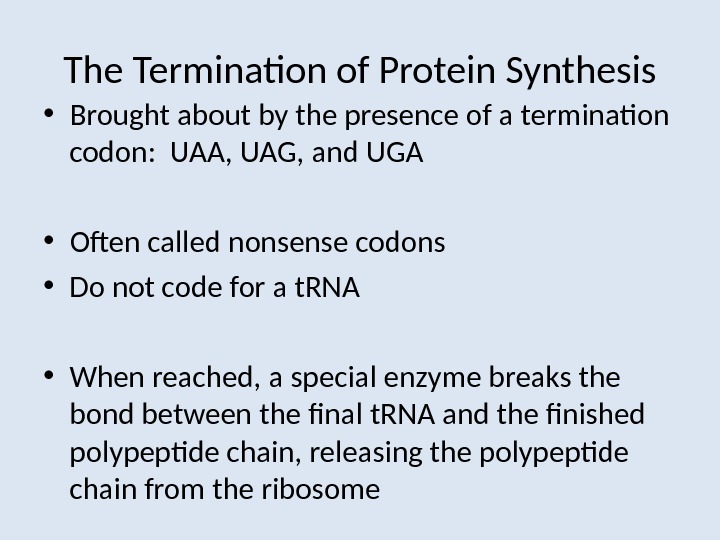

















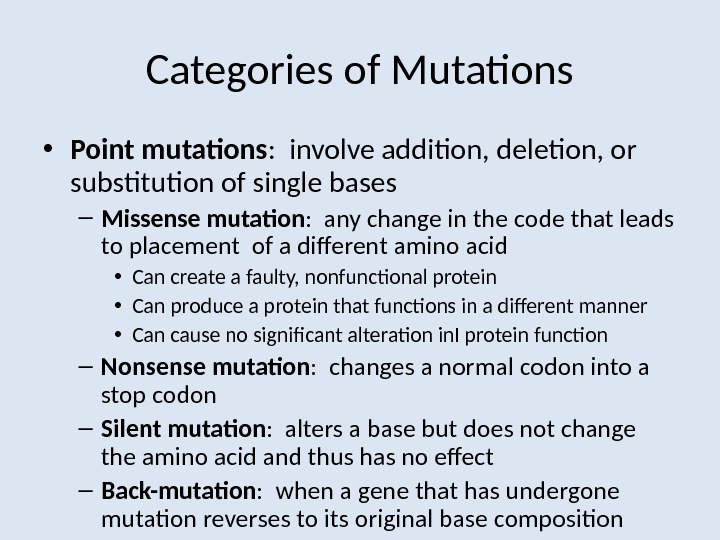













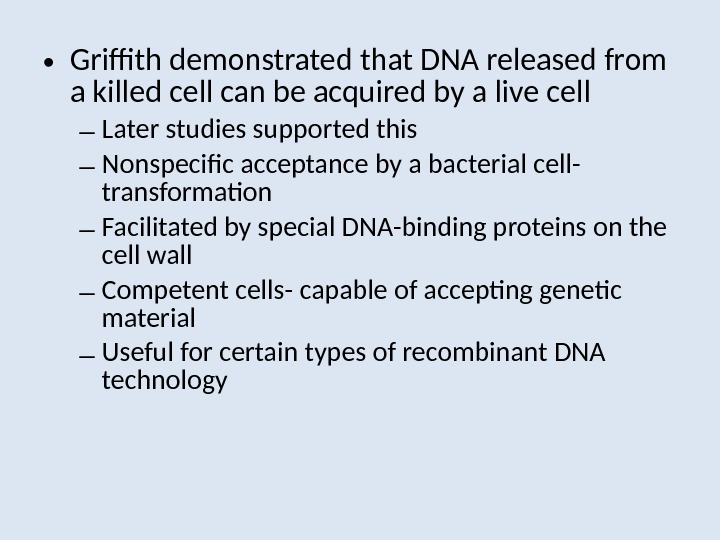




genetics_of_microorganism.ppt
- Размер: 12 Mегабайта
- Количество слайдов: 86
Описание презентации Microbial Genetics By Konrad T. Juszkiewicz MD, MPH по слайдам
 Microbial Genetics By Konrad T. Juszkiewicz MD, MPH
Microbial Genetics By Konrad T. Juszkiewicz MD, MPH
 Introduction to Genetics and Genes • Genetics : the study of the inheritance ( heredity ) of living things – Transmission of traits from parent to offspring – Expression and variation of those traits – The structure and function of the genetic material – How this material changes • Takes place on several levels: organismal, chromosomal, molecular
Introduction to Genetics and Genes • Genetics : the study of the inheritance ( heredity ) of living things – Transmission of traits from parent to offspring – Expression and variation of those traits – The structure and function of the genetic material – How this material changes • Takes place on several levels: organismal, chromosomal, molecular
 Microbial Genetics
Microbial Genetics
 The Nature of the Genetic Material • Must be able to self-replicate • Must be accurately duplicated and separated from each daughter cell
The Nature of the Genetic Material • Must be able to self-replicate • Must be accurately duplicated and separated from each daughter cell
 The Levels of Structure and Function of the Genome • Chromosome • Gene
The Levels of Structure and Function of the Genome • Chromosome • Gene
 Genome • The sum total of genetic material of a cell • Mostly in chromosomes • Can appear in nonchromosomal sites as well • In cells- exclusively DNA • In viruses- can be either DNA or RN
Genome • The sum total of genetic material of a cell • Mostly in chromosomes • Can appear in nonchromosomal sites as well • In cells- exclusively DNA • In viruses- can be either DNA or RN

 Chromosome • A discrete cellular structure composed of a neatly packed DNA molecule • Eukaryotic chromosomes – DNA molecule tightly wound around histone proteins – Located in the nucleus – Vary in number from a few to hundreds – Can occur in pairs (diploid) or singles (haploid) – Appear linear • Bacterial chromosomes – Condensed and secured by means of histone-like proteins – Single, circular chromosome
Chromosome • A discrete cellular structure composed of a neatly packed DNA molecule • Eukaryotic chromosomes – DNA molecule tightly wound around histone proteins – Located in the nucleus – Vary in number from a few to hundreds – Can occur in pairs (diploid) or singles (haploid) – Appear linear • Bacterial chromosomes – Condensed and secured by means of histone-like proteins – Single, circular chromosome
 Gene • A certain segment of DNA that contains the necessary code to make a protein or RNA molecule • Structural genes: code for proteins or code for RNA • Regulatory genes: control gene expression • Sum of all genes is an organism’s genotype • The expression of the genotype creates traits which make up the phenotype. Some genes may not be expressed in the phenotype. • All organisms contain more genes in their genotype than are manifested as a phenotype at a given time
Gene • A certain segment of DNA that contains the necessary code to make a protein or RNA molecule • Structural genes: code for proteins or code for RNA • Regulatory genes: control gene expression • Sum of all genes is an organism’s genotype • The expression of the genotype creates traits which make up the phenotype. Some genes may not be expressed in the phenotype. • All organisms contain more genes in their genotype than are manifested as a phenotype at a given time
 The Size and Packaging of Genomes • Vary greatly in size – Smallest viruses- 4 or 5 genes – Escherichia coli — 4, 288 genes – Human cell- 20, 000 to 25, 000 genes • The stretched-out DNA can be 1, 000 times or more longer than the cell
The Size and Packaging of Genomes • Vary greatly in size – Smallest viruses- 4 or 5 genes – Escherichia coli — 4, 288 genes – Human cell- 20, 000 to 25, 000 genes • The stretched-out DNA can be 1, 000 times or more longer than the cell

 The DNA Code: A Simple Yet Profound Message • 1953: James Watson and Francis Crick – Discovered DNA is a gigantic molecule – A type of nucleic acid – With two strands combined into a double helix
The DNA Code: A Simple Yet Profound Message • 1953: James Watson and Francis Crick – Discovered DNA is a gigantic molecule – A type of nucleic acid – With two strands combined into a double helix
 General Structure of DNA • Basic unit: nucleotide – Phosphate – Deoxyribose sugar – Nitrogenous base
General Structure of DNA • Basic unit: nucleotide – Phosphate – Deoxyribose sugar – Nitrogenous base
 Nucleotides • Covalently bond to form a sugar-phosphate linkage- the backbone of each strand • Each sugar attaches to two phosphates • One bond is to the 5’ carbon on deoxyribose • The other is to the 3’ carbon
Nucleotides • Covalently bond to form a sugar-phosphate linkage- the backbone of each strand • Each sugar attaches to two phosphates • One bond is to the 5’ carbon on deoxyribose • The other is to the 3’ carbon
 Nitrogenous Bases • Purines and pyrimidines • Attach by covalent bonds at the 1’ position of the sugar • Span the center of the molecule and pair with complementary bases from the other strands • The paired bases are joined by hydrogen bonds – Easily broken – Allow the molecule to be “unzipped” • Adenine always pairs with thymine • Guanine always pairs with cytosine
Nitrogenous Bases • Purines and pyrimidines • Attach by covalent bonds at the 1’ position of the sugar • Span the center of the molecule and pair with complementary bases from the other strands • The paired bases are joined by hydrogen bonds – Easily broken – Allow the molecule to be “unzipped” • Adenine always pairs with thymine • Guanine always pairs with cytosine
 Antiparallel Arrangment • One side of the helix runs in the opposite direction of the other- antiparallel • One helix runs from 5’ to 3’ direction • The other runs from 3’ to 5’
Antiparallel Arrangment • One side of the helix runs in the opposite direction of the other- antiparallel • One helix runs from 5’ to 3’ direction • The other runs from 3’ to 5’

 The Significance of DNA Structure • Arrangement of nitrogenous bases – Maintains the code during reproduction (conservative replication of DNA) – Provides variety
The Significance of DNA Structure • Arrangement of nitrogenous bases – Maintains the code during reproduction (conservative replication of DNA) – Provides variety
 Figure 9.
Figure 9.
 DNA Replication: Preserving the Code and Passing it On • The process of the genetic code duplicated and passed on to each offspring • Must be completed during a single generation time
DNA Replication: Preserving the Code and Passing it On • The process of the genetic code duplicated and passed on to each offspring • Must be completed during a single generation time
 The Overall Replication Process • Requires the actions of 30 different enzymes – Separate the strands – Copy its template – Produce two new daughter molecules
The Overall Replication Process • Requires the actions of 30 different enzymes – Separate the strands – Copy its template – Produce two new daughter molecules

 Semiconservative Replication • Each daughter molecule is identical to the parent in composition, but only one strand is completely new • The parent DNA molecule uncoils • The hydrogen bonds between the base pairs are unzipped – Separates the two strands – Exposes the nucleotide sequence of each strand to serve as templates • Two new strands are synthesized by attachment of the correct complementary nucleotides to each single-stranded template
Semiconservative Replication • Each daughter molecule is identical to the parent in composition, but only one strand is completely new • The parent DNA molecule uncoils • The hydrogen bonds between the base pairs are unzipped – Separates the two strands – Exposes the nucleotide sequence of each strand to serve as templates • Two new strands are synthesized by attachment of the correct complementary nucleotides to each single-stranded template
 Refinements and Details of Replication • Origin of replication – Short sequence – Rich in A and T – Held together by only two H bonds rather than three – Less energy is required to separate the two strands • Helicases bind to the DNA at the origin – Untwist the helix – Break the hydrogen bonds – Results in two separate strands
Refinements and Details of Replication • Origin of replication – Short sequence – Rich in A and T – Held together by only two H bonds rather than three – Less energy is required to separate the two strands • Helicases bind to the DNA at the origin – Untwist the helix – Break the hydrogen bonds – Results in two separate strands
 DNA Polymerase III • Synthesizes a new daughter strand using the parental strand as a template • The process depends on several other enzymes as well, but key points about DNA polymerase III: – Nucleotides that need to be read by DNA polymerase III are buried in the double helix- so the DNA must first be unwound and the two strands separated – DNA polymerase III is unable to begin synthesizing a chain of nucleotides but can only continue to add nucleotides to an already existing chain – DNA polymerase III always reads the original strand from 3” to 5” – DNA polymerase III can only add nucleotides in one direction, so a new strand is always synthesized from 5’ to 3’
DNA Polymerase III • Synthesizes a new daughter strand using the parental strand as a template • The process depends on several other enzymes as well, but key points about DNA polymerase III: – Nucleotides that need to be read by DNA polymerase III are buried in the double helix- so the DNA must first be unwound and the two strands separated – DNA polymerase III is unable to begin synthesizing a chain of nucleotides but can only continue to add nucleotides to an already existing chain – DNA polymerase III always reads the original strand from 3” to 5” – DNA polymerase III can only add nucleotides in one direction, so a new strand is always synthesized from 5’ to 3’

 Elongation and Termination of the Daughter Molecules • As replication proceeds, the newly produced double strand loops down • DNA polymerase I removes RNA primers and replaces them with DNA • When the forks come full circle and meet, ligases move along the lagging strand – Begin initial linking of the fragments – Complete synthesis and separation of the two circular daughter molecules
Elongation and Termination of the Daughter Molecules • As replication proceeds, the newly produced double strand loops down • DNA polymerase I removes RNA primers and replaces them with DNA • When the forks come full circle and meet, ligases move along the lagging strand – Begin initial linking of the fragments – Complete synthesis and separation of the two circular daughter molecules

 • Occasionally an incorrect base is added to the growing chain • Most are corrected • If not corrected, result in mutations • DNA polymerase III can detect incorrect, unmatching bases, excise them, and replace them with the correct base • DNA polymerase I can also proofread and repair
• Occasionally an incorrect base is added to the growing chain • Most are corrected • If not corrected, result in mutations • DNA polymerase III can detect incorrect, unmatching bases, excise them, and replace them with the correct base • DNA polymerase I can also proofread and repair
 9. 2 Applications of the DNA Code: Transcription and Translation • Central dogma – Genetic information flows from DNA to RNA to protein • The master code of DNA is used to synthesize an RNA molecule ( transcription ) • The information in the RNA is used to produce proteins ( translation ) • Exceptions: RNA viruses and retroviruses – Recently shown to be incomplete • In addition to the RNA that produces protein, other RNAs are used to regulate gene function • Many of the genetic malfunctions that cause human disease are found in these regulatory RNA segments
9. 2 Applications of the DNA Code: Transcription and Translation • Central dogma – Genetic information flows from DNA to RNA to protein • The master code of DNA is used to synthesize an RNA molecule ( transcription ) • The information in the RNA is used to produce proteins ( translation ) • Exceptions: RNA viruses and retroviruses – Recently shown to be incomplete • In addition to the RNA that produces protein, other RNAs are used to regulate gene function • Many of the genetic malfunctions that cause human disease are found in these regulatory RNA segments

 The Gene-Protein Connection • The Triplet Code and the Relationship to Proteins – Three consecutive bases on the DNA strand- called triplets – A gene differs from another in its composition of triplets – Each triplet represents a code for a particular amino acid – When the triplet code is transcribed and translated, it dictates the type and order of amino acids in a polypeptide chain • A protein’s primary structure determines its characteristic shape and function • Proteins ultimately determine phenotype • DNA is mainly a blueprint that tells the cell which kinds of proteins and RNAs to make and how to make them
The Gene-Protein Connection • The Triplet Code and the Relationship to Proteins – Three consecutive bases on the DNA strand- called triplets – A gene differs from another in its composition of triplets – Each triplet represents a code for a particular amino acid – When the triplet code is transcribed and translated, it dictates the type and order of amino acids in a polypeptide chain • A protein’s primary structure determines its characteristic shape and function • Proteins ultimately determine phenotype • DNA is mainly a blueprint that tells the cell which kinds of proteins and RNAs to make and how to make them

 The Major Participants in Transcription and Translation • Number of components participate, but most prominent: – m. RNA – t. RNA – regulatory RNAs – ribosomes – several types of enzymes – storehouse of raw materials • RNAs: Tools in the Cell’s Assembly Line – RNA differs from DNA • Single stranded molecule • Helical form • Contains uracil instead of thymine • The sugar is ribose – Many functional types, from small regulatory pieces to large structural ones – Only m. RNA is translated into a protein molecule
The Major Participants in Transcription and Translation • Number of components participate, but most prominent: – m. RNA – t. RNA – regulatory RNAs – ribosomes – several types of enzymes – storehouse of raw materials • RNAs: Tools in the Cell’s Assembly Line – RNA differs from DNA • Single stranded molecule • Helical form • Contains uracil instead of thymine • The sugar is ribose – Many functional types, from small regulatory pieces to large structural ones – Only m. RNA is translated into a protein molecule

 Messenger RNA: Carrying DNA’s Message • A transcript of a structural gene or genes in the DNA • Synthesized by the enzyme RNA polymerase • Synthesized by a process similar to synthesis of the leading strand during DNA replication • The message of this transcribed strand is later read as a series of triplets ( codons )
Messenger RNA: Carrying DNA’s Message • A transcript of a structural gene or genes in the DNA • Synthesized by the enzyme RNA polymerase • Synthesized by a process similar to synthesis of the leading strand during DNA replication • The message of this transcribed strand is later read as a series of triplets ( codons )
 Transfer RNA: The Key to Translation • Also a copy of a specific region of DNA • It is uniform in length (75 -95 nucleotides long) • Contains sequences of bases that form hydrogen bonds with complementary sections of the same t. RNA strand • At these points the molecule bends back upon itself into several hairpin loops, giving the molecule a cloverleaf structure that then folds into a complex, 3 -D helix
Transfer RNA: The Key to Translation • Also a copy of a specific region of DNA • It is uniform in length (75 -95 nucleotides long) • Contains sequences of bases that form hydrogen bonds with complementary sections of the same t. RNA strand • At these points the molecule bends back upon itself into several hairpin loops, giving the molecule a cloverleaf structure that then folds into a complex, 3 -D helix
 Transfer RNA: The Key to Translation cont. • Bottom loop of the cloverleaf exposes a triplet (the anticodon ) that designates the specificity of the t. RNA and complements m. RNA’s codons • At the opposite end of the molecule is a binding site for the amino acid that is specific for that anticodon • For each of the 20 amino acids there is at least one specialized type of t. RNA to carry it
Transfer RNA: The Key to Translation cont. • Bottom loop of the cloverleaf exposes a triplet (the anticodon ) that designates the specificity of the t. RNA and complements m. RNA’s codons • At the opposite end of the molecule is a binding site for the amino acid that is specific for that anticodon • For each of the 20 amino acids there is at least one specialized type of t. RNA to carry it

 The Ribosome: A Mobile Molecular Factory for Translation • The prokaryotic (70 S) ribosome composed of tightly packed r. RNA and protein • The interactions of proteins and r. RNA create the two subunits of the ribosome that engage in final translation of the genetic code • The r. RNA component of each subunit is a long polynucleotide molecule
The Ribosome: A Mobile Molecular Factory for Translation • The prokaryotic (70 S) ribosome composed of tightly packed r. RNA and protein • The interactions of proteins and r. RNA create the two subunits of the ribosome that engage in final translation of the genetic code • The r. RNA component of each subunit is a long polynucleotide molecule
 Transcription: The First Stage of Gene Expression Figure 9.
Transcription: The First Stage of Gene Expression Figure 9.
 Translation: The Second Stage of Gene Expression • All of the elements needed to synthesize a protein are brought together on the ribosomes • Five stages: initiation, elongation, termination, protein folding, and protein processing
Translation: The Second Stage of Gene Expression • All of the elements needed to synthesize a protein are brought together on the ribosomes • Five stages: initiation, elongation, termination, protein folding, and protein processing
 Figure 9.
Figure 9.
 Initiation of Translation • m. RNA molecule leaves DNA transcription site • Is transported to ribosomes in the cytoplasm • Ribosomal subunits are specifically adapted to assembling and forming sites to hold the m. RNA and t. RNA’s • Prokaryotic ribosomes – 70 s size • 50 s subunit • 30 s subunit • Eukaryotic ribosomes – 80 s • 60 s subunit • 40 s subunit
Initiation of Translation • m. RNA molecule leaves DNA transcription site • Is transported to ribosomes in the cytoplasm • Ribosomal subunits are specifically adapted to assembling and forming sites to hold the m. RNA and t. RNA’s • Prokaryotic ribosomes – 70 s size • 50 s subunit • 30 s subunit • Eukaryotic ribosomes – 80 s • 60 s subunit • 40 s subunit
 • The small subunit binds to the 5’ end of the m. RNA • Large subunit supplies enzymes for making peptide bonds on the protein • The ribosome scans the m. RNA by moving in the 5’ to 3’ direction along the m. RNA • The first codon is the START codon (AUG but can rarely be GUG) • With the m. RNA message in place on the ribosome, the t. RNAs enter the ribosome with their amino acids – The complementary t. RNA meets with the m. RNA code – Guided by the two sites on the large subunit called the P site and the A site – The E site is where used t. RNAs are released
• The small subunit binds to the 5’ end of the m. RNA • Large subunit supplies enzymes for making peptide bonds on the protein • The ribosome scans the m. RNA by moving in the 5’ to 3’ direction along the m. RNA • The first codon is the START codon (AUG but can rarely be GUG) • With the m. RNA message in place on the ribosome, the t. RNAs enter the ribosome with their amino acids – The complementary t. RNA meets with the m. RNA code – Guided by the two sites on the large subunit called the P site and the A site – The E site is where used t. RNAs are released
 The Master Genetic Code: The Message in Messenger RNA • The m. RNA codons and the amino acids they specify • Redundancy of the genetic code: a particular amino acid can be coded for by more than a single codon • Wobble: in many cases, only the first two nucleotides are required to encode the correct amino acid- thought to permit some variation or mutation without altering the message
The Master Genetic Code: The Message in Messenger RNA • The m. RNA codons and the amino acids they specify • Redundancy of the genetic code: a particular amino acid can be coded for by more than a single codon • Wobble: in many cases, only the first two nucleotides are required to encode the correct amino acid- thought to permit some variation or mutation without altering the message


 The Beginning of Protein Synthesis Figure 9.
The Beginning of Protein Synthesis Figure 9.
 The Termination of Protein Synthesis • Brought about by the presence of a termination codon: UAA, UAG, and UGA • Often called nonsense codons • Do not code for a t. RNA • When reached, a special enzyme breaks the bond between the final t. RNA and the finished polypeptide chain, releasing the polypeptide chain from the ribosome
The Termination of Protein Synthesis • Brought about by the presence of a termination codon: UAA, UAG, and UGA • Often called nonsense codons • Do not code for a t. RNA • When reached, a special enzyme breaks the bond between the final t. RNA and the finished polypeptide chain, releasing the polypeptide chain from the ribosome
 Modifications to Proteins • Before it is released from the ribosome it starts to fold upon itself to achieve its biologically active tertiary conformation • Post-translational modifications may be necessary – Starting animo acid (methionine) clipped off – Cofactors added – Join with other proteins to form quaternary levels of structure
Modifications to Proteins • Before it is released from the ribosome it starts to fold upon itself to achieve its biologically active tertiary conformation • Post-translational modifications may be necessary – Starting animo acid (methionine) clipped off – Cofactors added – Join with other proteins to form quaternary levels of structure
 Transcription and Translation is Efficient (Polyribosomes)
Transcription and Translation is Efficient (Polyribosomes)
 Eukaryotic Transcription and Translation: Similar Yet Different • Start codon is also AUG, but it codes for a different form of methionine • Eukaryotic m. RNAs code for just one protein • The presence of the DNA in the nucleus means that eukaryotic transcription and translation cannot be simultaneous • m. RNA in eukaryotes must pass through pores in the nuclear membrane and be carried to the ribosomes in the cytoplasm for translation
Eukaryotic Transcription and Translation: Similar Yet Different • Start codon is also AUG, but it codes for a different form of methionine • Eukaryotic m. RNAs code for just one protein • The presence of the DNA in the nucleus means that eukaryotic transcription and translation cannot be simultaneous • m. RNA in eukaryotes must pass through pores in the nuclear membrane and be carried to the ribosomes in the cytoplasm for translation
 • Most eukaryotic genes do not exist as an uninterrupted series of triplets coding for a protein – Introns — sequences of bases that do not code for protein – Exons — coding regions that will be translated into protein – Called a split gene- requires further processing before translation – Transcription of the entire gene with both exons and introns occurs first, producing a pre-m. RN
• Most eukaryotic genes do not exist as an uninterrupted series of triplets coding for a protein – Introns — sequences of bases that do not code for protein – Exons — coding regions that will be translated into protein – Called a split gene- requires further processing before translation – Transcription of the entire gene with both exons and introns occurs first, producing a pre-m. RN
 Most eukaryotic genes do not exist as an uninterrupted series of triplets coding for a protein – A series of adenosines is added to the m. RNA molecule (protects it and directs it out of the nucleus) – A splicesome recognizes the exon-intron junctions and enzymatically cuts through them – The exons are joined end to end – Some introns do code for cell substances (in humans, introns represent 98% of the DNA)
Most eukaryotic genes do not exist as an uninterrupted series of triplets coding for a protein – A series of adenosines is added to the m. RNA molecule (protects it and directs it out of the nucleus) – A splicesome recognizes the exon-intron junctions and enzymatically cuts through them – The exons are joined end to end – Some introns do code for cell substances (in humans, introns represent 98% of the DNA)
 Figure 9.
Figure 9.
 The Genetics of Animal Viruses • Diverse • Some- nucleic acid is linear; others, circular • Most exist in a single molecule, but in a few it is in several • Most contain ds. DNA or ss. RNA, but other patterns exist • In all cases: – Viral nucleic acid penetrates the cell – The nucleic acid is introduced into the host’s gene-processing machinery – The virus instructs the host’s machinery to synthesize large numbers of new virus particles – Viral m. RNA is translated into viral proteins on host cell ribosomes using host t. RN
The Genetics of Animal Viruses • Diverse • Some- nucleic acid is linear; others, circular • Most exist in a single molecule, but in a few it is in several • Most contain ds. DNA or ss. RNA, but other patterns exist • In all cases: – Viral nucleic acid penetrates the cell – The nucleic acid is introduced into the host’s gene-processing machinery – The virus instructs the host’s machinery to synthesize large numbers of new virus particles – Viral m. RNA is translated into viral proteins on host cell ribosomes using host t. RN
 9. 3 Genetic Regulation of Protein Synthesis and Metabolism • Control mechanisms ensure that genes are active only when their products are required – Enzymes are produced as they are needed – Prevents the waste of energy and materials – Antisense RNAs, micro RNAs, and riboswitches provide regulation in prokaryotes and eukaryotes • Prokaryotes organize collections of genes into operons – Coordinated set of genes regulated as a single unit – Either inducible or repressible • Inducible- the operon is turned in by the substrate of the enzyme for which the structural genes code • Repressible- contain genes coding for anabolic enzymes; several genes in a series are turned off by the product synthesized by the enzyme
9. 3 Genetic Regulation of Protein Synthesis and Metabolism • Control mechanisms ensure that genes are active only when their products are required – Enzymes are produced as they are needed – Prevents the waste of energy and materials – Antisense RNAs, micro RNAs, and riboswitches provide regulation in prokaryotes and eukaryotes • Prokaryotes organize collections of genes into operons – Coordinated set of genes regulated as a single unit – Either inducible or repressible • Inducible- the operon is turned in by the substrate of the enzyme for which the structural genes code • Repressible- contain genes coding for anabolic enzymes; several genes in a series are turned off by the product synthesized by the enzyme
 The Lactose Operon: A Model for Inducible Gene Regulation in Bacteria • Best understood cell system for explaining control through genetic induction • Lactose ( lac ) operon • Regulates lactose metabolism in Escherichia coli • Three important features: – The regulator (a gene that codes for a protein capable of repressing the operon [a repressor ]) – The control locus • Promoter — recognized by RNA polymerase • Operator — a sequence that acts as an on/off switch for transcription – The structural locus, made up of three genes each coding for a different enzyme needed to catabolize lactose
The Lactose Operon: A Model for Inducible Gene Regulation in Bacteria • Best understood cell system for explaining control through genetic induction • Lactose ( lac ) operon • Regulates lactose metabolism in Escherichia coli • Three important features: – The regulator (a gene that codes for a protein capable of repressing the operon [a repressor ]) – The control locus • Promoter — recognized by RNA polymerase • Operator — a sequence that acts as an on/off switch for transcription – The structural locus, made up of three genes each coding for a different enzyme needed to catabolize lactose
 Figure 9.
Figure 9.
 A Repressible Operon • Normally the operon is in the “on” mode and will be turned “off ” only when the nutrient is no longer required • The excess nutrient serves as a corepressor needed to block the action of the operon • Example, arg operon
A Repressible Operon • Normally the operon is in the “on” mode and will be turned “off ” only when the nutrient is no longer required • The excess nutrient serves as a corepressor needed to block the action of the operon • Example, arg operon
 Figure 9.
Figure 9.
 Antibiotics that Affect Transcription and Translation • Some infection therapy is based on the concept that certain drugs react with DNA, RNA, or ribosomes and alter genetic expression • Based on the premise that growth of the infectious agent will be inhibited by blocking its protein-synthesizing machinery selectively • Drugs that inhibit protein synthesis exert their influence on transcription or translation • Antibiotics often target the ribosome- inhibiting ribosomal function and ultimately protein synthesis
Antibiotics that Affect Transcription and Translation • Some infection therapy is based on the concept that certain drugs react with DNA, RNA, or ribosomes and alter genetic expression • Based on the premise that growth of the infectious agent will be inhibited by blocking its protein-synthesizing machinery selectively • Drugs that inhibit protein synthesis exert their influence on transcription or translation • Antibiotics often target the ribosome- inhibiting ribosomal function and ultimately protein synthesis
 Mutations: Changes in the Genetic Code • Genetic change is the driving force of evolution • Mutation : when phenotypic changes are due to changes in the genotype • An alteration in the nitrogen base sequence of DNA • Wild type : a microorganism that exhibits a natural, nonmutated characteristic • Mutant strain : when a microorganism bears a mutation – Useful for tracking genetic events, – Unraveling genetic organization, and – Pinpointing genetic markers
Mutations: Changes in the Genetic Code • Genetic change is the driving force of evolution • Mutation : when phenotypic changes are due to changes in the genotype • An alteration in the nitrogen base sequence of DNA • Wild type : a microorganism that exhibits a natural, nonmutated characteristic • Mutant strain : when a microorganism bears a mutation – Useful for tracking genetic events, – Unraveling genetic organization, and – Pinpointing genetic markers

 Causes of Mutations • Spontaneous mutation : random change in the DNA arising from errors in replication • Induced mutation : results from exposure to known mutagens
Causes of Mutations • Spontaneous mutation : random change in the DNA arising from errors in replication • Induced mutation : results from exposure to known mutagens

 Categories of Mutations • Point mutations : involve addition, deletion, or substitution of single bases – Missense mutation : any change in the code that leads to placement of a different amino acid • Can create a faulty, nonfunctional protein • Can produce a protein that functions in a different manner • Can cause no significant alteration in. I protein function – Nonsense mutation : changes a normal codon into a stop codon – Silent mutation : alters a base but does not change the amino acid and thus has no effect – Back-mutation : when a gene that has undergone mutation reverses to its original base composition
Categories of Mutations • Point mutations : involve addition, deletion, or substitution of single bases – Missense mutation : any change in the code that leads to placement of a different amino acid • Can create a faulty, nonfunctional protein • Can produce a protein that functions in a different manner • Can cause no significant alteration in. I protein function – Nonsense mutation : changes a normal codon into a stop codon – Silent mutation : alters a base but does not change the amino acid and thus has no effect – Back-mutation : when a gene that has undergone mutation reverses to its original base composition
 Categories of Mutations cont. • Frame shift mutations : mutations that occur when one or more bases are inserted into or deleted from a newly synthesized DNA strand – Changes the reading frame of the m. RNA – Nearly always result in a nonfunctional protein
Categories of Mutations cont. • Frame shift mutations : mutations that occur when one or more bases are inserted into or deleted from a newly synthesized DNA strand – Changes the reading frame of the m. RNA – Nearly always result in a nonfunctional protein

 Repair of Mutations • Most ordinary DNA damage is resolved by enzymatic systems specialized for finding and fixing such defects • DNA that has been damaged by UV radiation – Restored by photoactivation or light repair – DNA photolayse- light-sensitive enzyme • Excision repair – Excise mutations by a series of enzymes – Remove incorrect bases and add correct one
Repair of Mutations • Most ordinary DNA damage is resolved by enzymatic systems specialized for finding and fixing such defects • DNA that has been damaged by UV radiation – Restored by photoactivation or light repair – DNA photolayse- light-sensitive enzyme • Excision repair – Excise mutations by a series of enzymes – Remove incorrect bases and add correct one

 The Ames Test • Rapid screening system • Detects chemicals with carcinogenic potential • Any chemical capable of mutating bacterial DNA can similarly mutate mammalian DN
The Ames Test • Rapid screening system • Detects chemicals with carcinogenic potential • Any chemical capable of mutating bacterial DNA can similarly mutate mammalian DN
 Figure 9.
Figure 9.
 Positive and Negative Effects of Mutations • Mutations are permanent and inheritable • Most are harmful but some provide adaptive advantages
Positive and Negative Effects of Mutations • Mutations are permanent and inheritable • Most are harmful but some provide adaptive advantages
 DNA Recombination Events • Recombination : when one organism donates DNA to another organism • The end result is a new strain different from both the donor and the original recipient • Bacterial plasmids and gene exchange • Recombinant organism: Any organism that contains (and expresses) genes that originated in another organism
DNA Recombination Events • Recombination : when one organism donates DNA to another organism • The end result is a new strain different from both the donor and the original recipient • Bacterial plasmids and gene exchange • Recombinant organism: Any organism that contains (and expresses) genes that originated in another organism
 Transmission of Genetic Material in Bacteria • Usually involves small pieces of DNA (plasmids or chromosomal fragments) • Plasmids can replicate independently of the bacterial chromosome • Chromosomal fragments must integrate themselves into the bacterial chromosome in order to replicate • Three means of genetic recombination in bacteria – Conjugation – Transformation – Transduction
Transmission of Genetic Material in Bacteria • Usually involves small pieces of DNA (plasmids or chromosomal fragments) • Plasmids can replicate independently of the bacterial chromosome • Chromosomal fragments must integrate themselves into the bacterial chromosome in order to replicate • Three means of genetic recombination in bacteria – Conjugation – Transformation – Transduction

 Conjugation: Bacterial “Sex”
Conjugation: Bacterial “Sex”
 Biomedical Importance of Conjugation • Resistance (R) plasmids , or factors — bear genes for resisting antibiotics • Can confer multiple resistance to antibiotics to a strain of bacteria • R factors can also carry resistance to heavy metals or for synthesizing virulence factors
Biomedical Importance of Conjugation • Resistance (R) plasmids , or factors — bear genes for resisting antibiotics • Can confer multiple resistance to antibiotics to a strain of bacteria • R factors can also carry resistance to heavy metals or for synthesizing virulence factors
 Transformation: Capturing DNA from Solution
Transformation: Capturing DNA from Solution
 • Griffith demonstrated that DNA released from a killed cell can be acquired by a live cell – Later studies supported this – Nonspecific acceptance by a bacterial cell- transformation – Facilitated by special DNA-binding proteins on the cell wall – Competent cells- capable of accepting genetic material – Useful for certain types of recombinant DNA technology
• Griffith demonstrated that DNA released from a killed cell can be acquired by a live cell – Later studies supported this – Nonspecific acceptance by a bacterial cell- transformation – Facilitated by special DNA-binding proteins on the cell wall – Competent cells- capable of accepting genetic material – Useful for certain types of recombinant DNA technology
 Transduction: The Case of the Piggyback DN
Transduction: The Case of the Piggyback DN

 Transposons: “This Gene is Jumpin”
Transposons: “This Gene is Jumpin”
 • Contain DNA that codes for the enzymes needed to remove and reintegrate the transposon at another site in the genome • Insertion elements- tranposons that consist of only two genetic sequences • Retro-transposon- can transcribe DNA into RNA and back into DNA for insertion in a new location • Overall effect- scrambles the genetic language • In bacteria, involved in: – Changes in traits such as colony morphology, pigmentation, and antigenic characteristics – Replacement of damaged DNA, – Inter-microbrial transfer of drug resistance
• Contain DNA that codes for the enzymes needed to remove and reintegrate the transposon at another site in the genome • Insertion elements- tranposons that consist of only two genetic sequences • Retro-transposon- can transcribe DNA into RNA and back into DNA for insertion in a new location • Overall effect- scrambles the genetic language • In bacteria, involved in: – Changes in traits such as colony morphology, pigmentation, and antigenic characteristics – Replacement of damaged DNA, – Inter-microbrial transfer of drug resistance

